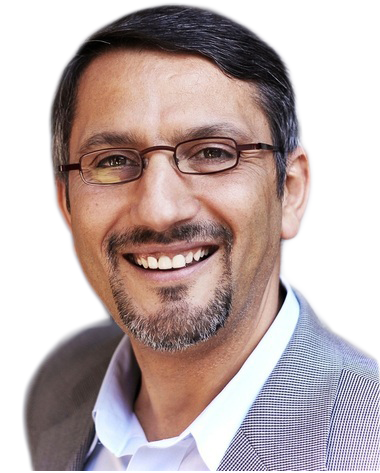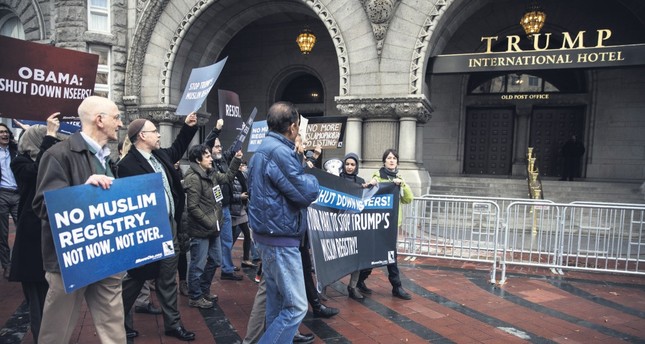By a vote of 5-4, the U.S. Supreme Court handed down a decision to uphold President Donald Trump’s Muslim ban affecting five Muslim-majority countries as well as North Korea and Venezuela. Once again by issuing this decision, the Supreme Court has managed to put another stain on its already heavily tarnished record regarding cases affecting racial, ethnic and religious minorities in the U.S. In the released majority opinion, Chief Justice Roberts skirted around the anti-Muslim basis of the ban made by Trump during his campaign and immediately after taking the White House that claimed: “The issue before us is not whether to denounce the statements.”
According to the majority opinion, “It is instead the significance of those statements in reviewing a presidential directive, neutral on its face, addressing a matter within the core of executive responsibility … we must consider not only the statements of a particular president but also the authority of the presidency itself.” The Executive Authority is the fig leaf given by the Supreme Court to sanction a religiously focused travel ban and not address the anti-Muslim rationale behind it.
Law is a byproduct of social conditions, and the current Islamophobic and securitization-infused political, social and cultural environment delivered again a shameful decision that will stand next to Dred Scott vs. Sandford and Korematsu vs. the United States. While many hoped for a Supreme Court decision that would have been corrective to the religiously and Islamophobically produced Muslim ban, the history of previous decisions illustrates the justices siding with the executive authority even when its actions are highly discriminatory.
The 1882 Chinese Exclusionary Act, the 1940s internment of the Japanese through Executive Order 9066 and the current Muslim ban mark shameful episodes in the U.S.’ political, social and legal history. Critically, the Supreme Court’s decisions point to the rising tide of xenophobia and racism in the U.S., which has only intensified since the 2016 election of Trump. Consequently, the court’s decision should aptly be called Trump’s and the U.S. Supreme Court’s Muslim exclusionary act, which reflects the same policy and legal perspectives that informed and led to the Chinese Exclusionary Act of 1882 and Japanese internment under Executive Order 9066.
Similarity to Korematsu case
Indeed, both the majority and minority justice opinions on Trump’s Muslim ban made references to the Korematsu case, a shameful episode in the history of the court, whereby the court at the time issued a decision that deemed the internment of Americans of Japanese ancestry throughout the duration of World War II legal. In upholding the travel ban, the court finally overruled the Korematsu case, “The forcible relocation of U.S. citizens to concentration camps, solely and explicitly on the basis of race, is objectively unlawful and outside the scope of presidential authority.” Judge Roberts argued that the internment and the travel ban are different: “But it is wholly inapt to liken that morally repugnant order to a facially neutral policy denying certain foreign nationals the privilege of admission.” Supreme Court Justice Sonia Sotomayor wrote a dissenting minority opinion and made a compelling point that “the court blindly accepts the government’s invitation to sanction an openly discriminatory policy and is essentially replacing one gravely wrong decision with another.” Overruling Korematsu was long overdue but Roberts has tarnished the court anew while erasing the shame of an earlier era.
A cursory examination of the U.S.’ immigration and racial history provides ample evidence of a xenophobic river running deep underneath the country’s political, legal, social, economic and religious discourses. This deep xenophobic river started before the U.S. was the U.S. and witnessed the genocide of the native population followed by the stealing and bondage of Africans into slavery to provide free labor for plantations and to build the country. A deep river dating back to Native American and African American blood and sweat that continues to irrigate the xenophobic roots that easily burst through when conniving politicians stoke the fertile grounds of the ethically and morally desolate landscape scared by years of pain and suffering.
Indigenous populations had no standing or chance in American courts and continue to face the short end of the legal stick, and possibly no stick at all. African Americans and the law is a long and painful narrative of sanctioning separate and unequal in the past and present. “Entering the courtroom while ‘Black’ is the same as driving, walking, or selling something on the sidewalk while ‘Black’ – you’re guilty until proven innocent!” One cannot speak of “black America” and justice because the record of injustice is the norm rather than the exception.
Similarly, the history of Chinese Americans is another illustration of highly racialized and discriminatory treatment that immigrants have faced through the generations. U.S. immigration laws have been written on the backs, the pain and the suffering of Chinese Americans and the Exclusionary Act of 1882, which remained in effect until 1965 when Congress passed the Immigration Reform Act. Yes, the U.S. presents itself as an immigrant nation but don’t let the flashy advertisements divert your attention from the painful episodes and struggles undertaken to trump and counter the deep xenophobic river running underneath the country’s political and cultural soil.
The case of Japanese internment is a little different and might closely resemble the stoked fear that is directed at Muslims as a group. Targeting Japanese Americans as a class made it possible for the government and the courts to support the internment of innocent U.S. citizens and noncitizens for the duration of World War II. Far from being a threat, the internment of the Japanese was made possible by the political elites stoking and intensifying xenophobia and racism to rally the country behind the war efforts. Trump’s push for the Muslim ban and for separating children from their parents upon illegal entry to the U.S. at the Mexican border is built upon a similar strategy of stoking the white middle class and rallying their poor economic, social and political resentment and directing them toward an electoral campaign.
Here, the response of the American Muslims to the Supreme Court decision and the broader immigration exclusionary measures is to hunker down and prepare for a long political and legal fight that will test their mettle and organizing abilities and shape their future in the country. The national atmosphere has been poisoned by an anti-immigrant, xenophobic and Islamophobic political and hostile public discourses that will take time, resources and organizing to undo. The examples of earlier communities that faced similar circumstances should be studied and a national and international effort should be undertaken to change the landscape in the country.
Immediate political efforts should be directed at the 2018 midterm election and the 2020 presidential election so the “Muslim Exclusionary Act,” Islamophobia, racism and immigration become a litmus test for anyone running for office. This would necessitate the development of a strong and principled coalition with communities that are facing similar circumstances and making sure to get back to real grassroots organizing. The recent trend of depending only on social media and analytics will not be a match to the massive funding coming from the deep pockets that have nefarious reasons for supporting racist, Islamophobic and xenophobic political elites. In the long run, a multi-pronged strategy should be put in place to bring a change in policy, law and society in general.
First, this strategy calls for involvement in the electoral process at all levels as well as making sure there are Muslims that run for office and support those from other communities who are running and have the best interest of the community at heart. Second, the fight for Muslim rights should have a legal front to challenge the law in courts and bring as many cases as humanly possible, not only in relation to the travel ban but also other areas of the law that feed into the powerful Islamophobic narrative, including silencing our collective voices on Palestine and the constant securitization of the community. Third, the Muslim community needs to develop a media and education campaign to impact the social and cultural environment that permits racism and xenophobia as a norm. Fourth, Muslims need to work on developing a sustained and proactive protest movement to mobilize on a regular basis, which should include acts of civil disobedience when possible. Fifth, Muslims and their allies in the U.S. and across the world should make sure to initiate boycotts against businesses and individuals that fund and support politicians that stoke racism and xenophobia. Finally, the diverse Muslim community should utilize transnational institutions and contacts to mount a human-rights-based response to what Muslims are facing in the current period in the U.S. Change is coming, but the person you are waiting to bring it about is already here – you.


